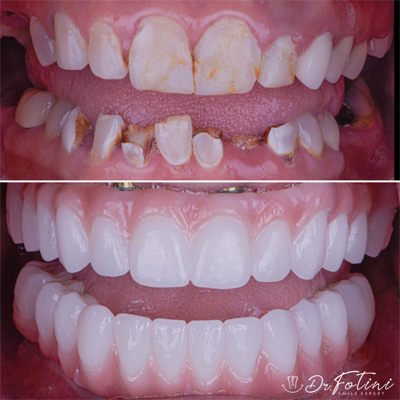Discover Excellence in Dental Implants Kent: Smile Confidently
Discover Excellence in Dental Implants Kent: Smile Confidently
Blog Article
Experience the most up to date Developments in Oral Implants Modern Technology
As the area of dentistry proceeds to develop, the advancements in oral implant technology have actually been nothing brief of exceptional. The assimilation of innovation is revolutionizing the capability of dental implants, assuring improved end results and client contentment.
Advanced Materials for Boosted Toughness
In the world of dental implants innovation, the combination of innovative products has actually substantially added to improving sturdiness and longevity of these vital dental prosthetics. The use of products such as titanium alloys, zirconia, and ceramic compounds has changed the field by using raised biocompatibility, toughness, and resistance to corrosion.
Titanium alloys are widely utilized in oral implants as a result of their extraordinary strength-to-weight proportion, deterioration resistance, and compatibility with the human body. These alloys guarantee the security and long life of the dental implant by withstanding the forces put in throughout eating and talking, providing a reputable remedy for people looking for durable tooth substitutes.
Zirconia, a sort of ceramic product, has actually obtained popularity for its biocompatibility and natural tooth-like appearance. Its high strength and resistance to wear make it an appropriate option for oral crowns and bridges, boosting the general appearances and functionality of the implant.

Digital Imaging for Exact Positioning
The evolution of oral implants modern technology has actually additionally progressed with the combination of digital imaging techniques, ensuring precise positioning of these prosthetics for optimum functional and visual end results. Digital imaging plays a vital function in the planning and positioning of oral implants by offering detailed 3D photos of the person's jawbone structure. This technology permits dental experts to examine bone thickness, find essential frameworks, and prepare the exact placement and angle for implant placement with unparalleled precision.
By utilizing electronic imaging, dental experts can create digital surgical guides that function as a roadmap during the implant positioning procedure. These guides are tailored for each and every person, considering their distinct anatomy and the wanted outcome. This degree of precision not only boosts the success price of dental implant treatments however also reduces the danger of complications.
In addition, digital imaging makes it possible for dental experts to picture the last prosthetic restoration prior to the actual positioning of implants, enabling meticulous preparation and ensuring that the result fulfills the client's visual expectations. On the whole, the combination of electronic imaging technology has reinvented the area of dental implants, offering individuals an extra predictable, reliable, and patient-specific treatment technique.

Minimally Intrusive Surgical Techniques


Developments in medical methods have led to the development of minimally invasive techniques in the area of oral implantology. These methods aim to decrease injury to the individual, shorten recovery times, and improve total therapy outcomes. Minimally invasive procedures involve smaller sized important source incisions, specialized instruments, and advanced imaging innovations to specifically position dental implants with marginal interruption to surrounding cells.
One secret aspect of minimally intrusive methods is using led surgical procedure, where 3D imaging and computer-aided style software program are utilized to plan the dental implant placement with fantastic precision. This enables a more foreseeable outcome and can usually get rid of the need for considerable flap surgery.
In addition, improvements in materials and implant layout have additionally contributed to the success of minimally intrusive techniques. Implants with improved surface buildings promote faster osseointegration, lowering the healing time called for before the prosthetic reconstruction can be put.
3D Printing for Custom-made Solutions
Using 3D printing technology in oral implantology enables for the production of highly tailored services tailored to specific client needs and physiological variations. This innovative modern technology allows dental specialists to create and make dental implants with exceptional precision and precision. By making use of digital imaging techniques, such as cone beam of light computed tomography (CBCT), detailed 3D link versions of the client's mouth can be created to direct the dental implant planning process.
One of the crucial advantages of 3D printing in dental implantology is the ability to create patient-specific implants that perfectly fit the distinct composition of each person. This personalized technique assists boost the overall success and longevity of the dental implant by making certain optimum fit and positioning. In addition, 3D printing permits the manufacturing of intricate geometries and detailed frameworks that would certainly be tough or difficult to achieve using conventional manufacturing methods.
Furthermore, 3D printing technology enables dental professionals to improve the implantation process, reducing surgical procedure time and boosting general client experience. With its ability to develop tailored options rapidly and efficiently, 3D printing is changing the area of dental implantology, offering patients cutting-edge treatment options and boosted results.
Integrated Technology for Improved Functionality
Applying innovative technology in oral implantology improves capability and accuracy, elevating the criterion of look after clients undergoing dental implant procedures. Integrated modern technology plays a critical function in boosting the general success and resilience of oral implants. One essential advancement is the combination of electronic scanning and imaging innovations, such as cone-beam calculated tomography (CBCT) and intraoral scanners. These tools enable comprehensive 3D imaging of the person's oral frameworks, helping with exact treatment planning and dental implant placement. here
Moreover, the assimilation of computer-aided design and computer-aided manufacturing (CAD/CAM) innovation enables the creation of custom-made dental implant remediations with remarkable precision. CAD/CAM systems use digital impressions to make prosthetics that perfectly fit the patient's distinct composition, making certain optimum convenience and functionality. Additionally, the usage of robotic-assisted surgery in implant placement enhances precision and minimizes the risk of human error.
Conclusion
Finally, the current advancements in oral implants innovation offer improved sturdiness with sophisticated materials, accurate placement with digital imaging, minimally intrusive medical methods, personalized services with 3D printing, and improved functionality with integrated modern technology - Dental implants Kent. These innovations in oral implants innovation are reinventing the field and providing patients with even more reliable and reliable treatment alternatives for recovering their smiles and dental health and wellness
The assimilation of innovation is revolutionizing the capability of dental implants, promising enhanced outcomes and person satisfaction.
The development of dental implants technology has actually even more progressed with the combination of electronic imaging methods, ensuring exact placement of these prosthetics for ideal functional and aesthetic end results. Minimally invasive medical procedures entail smaller lacerations, specialized instruments, and advanced imaging technologies to exactly position dental implants with very little disturbance to surrounding tissues.
Applying cutting-edge innovation in oral implantology enhances performance and accuracy, boosting the standard of care for people undergoing dental implant procedures. Dental implants Kent. Integrated modern technology plays a vital role in enhancing the total success and durability of dental implants
Report this page